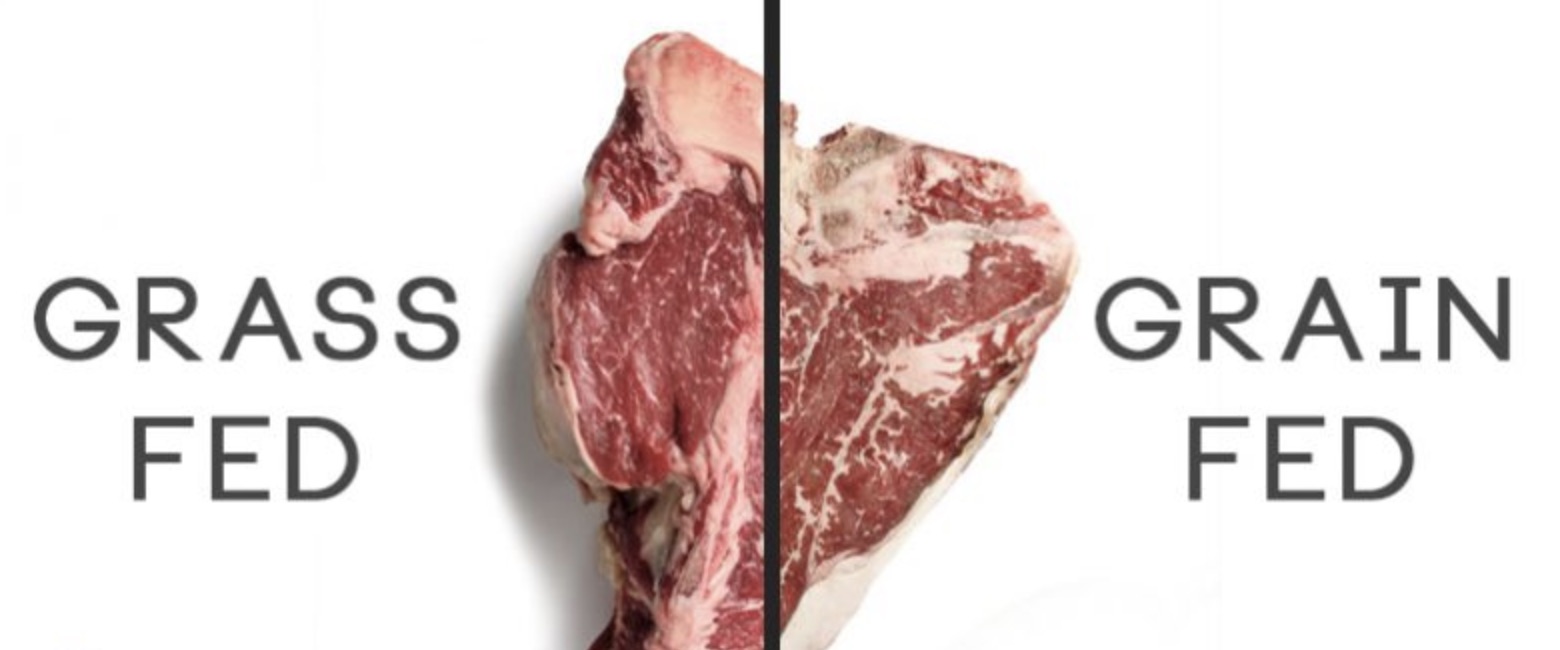Grass Fed vs. Grain Fed Beef
The other week when I was listening to a podcast a certain ad came on and I instantly knew who was talking and was intrigued. The man who was talking was Joel Salatin who is the owner of Polyface Farms in Virginia. They are a meat producing farm that only produce the highest quality of meat. I knew it was him because I have seen him many times in documentaries as well as read many Michael Pollen books where he is quoted. In this advertisement he was talking about the difference in taste between free range grass fed beef and feedlot beef. In the quick time that he had to talk during this ad he mentioned that since the cattle on his farm were actually moving around and getting exercise that his cows meat was more moist than feedlot cows. This not only made sense to me because muscle is mostly water but also sparked an interest in me to finally find out what the real nutrition difference is between grass fed beef and the cheap feedlot beef. I have always had the idea in my head that grass fed is better for you because it is more natural and typically things more natural are healthier but I had no evidence to back that up besides that. I want to share with you guys today what my findings were and help you guys out on the path to the best versions of yourself.
First off, if the beef that you are consuming is considered organic this means that antibiotics can only be used in a case by case basis and not as a preventative measure. This also means that growth hormones were not used while trying to fatten up the cow for slaughter. If you are eating cows that have been pumped with antibiotics for most of their adult lives that means those antibiotics are going into your body from them. This is up to you to decide whether that is best for you or not. What cows are eating has a huge effect on the nutritional value of the beef and one of the major differences is fatty acids. Grass fed beef contains less monounsaturated fat than grain fed beef. In a study done in 2014 which examined the fatty acid difference in grass fed and grain fed beef, they found that there was about a ten percent difference in levels of monounsaturated fat.[1] The grain fed having more of it. The prevalent difference in grain fed versus grass fed when it comes to fatty acids is omega 3s. Grass fed beef has three to five times more omega 3s in it than grain fed beef.[2] This is hugely important to the healthiness of your meat because lots of us are taking supplements to get more omega 3s and it makes me think about if everyone ate grass fed beef would you need a supplement to get more omega 3s. Lastly it was found in some studies that grass fed beef had about twice as much CLA as grain fed.[3] CLA is short for conjugated linoleic acid. CLA is known to help people lose fat, maintain muscle, and can even help control type two diabetes. Again many people are taking supplements to get more CLA in their diet but if they ate more grass fed beef this issue could go away. Grass fed beef has also been shown to have higher levels of Vitamin A and E. [4] These vitamins are a crucial part of our diet and the more we can get from our regular diet the less we will have to take vitamins and other supplements.

So from my investigation it seems as though grass fed beef is certainly more nutritious and should be your go to if you have the means to shop for a bit more pricey beef. The “its too expensive” argument is always what I hear when talking about grass fed beef. It is going to be more money but if you value your health and have the means to buy grass fed beef without drastically changing your current lifestyle then I think it is a wise decision to pay the extra money and get better quality food. Plus for example if you are getting all the omega 3s you need from the beef you are eating then you could stop buying supplements and just spend that money on better beef. This could be true for other nutrients that you will be getting more of as well.
By Reid Babinec
[1] https://www.sciencedirect.com/science/article/pii/S0309174013004944?via%3Dihub
[2] https://nutritionj.biomedcentral.com/articles/10.1186/1475-2891-9-10
[3] https://academic.oup.com/ajcn/article/85/5/1203/4632999
[4] https://www.sciencedirect.com/science/article/abs/pii/S0309174006002701


 YES! Contact me today to schedule a FREE no obligation consultation and trial workout.
YES! Contact me today to schedule a FREE no obligation consultation and trial workout.